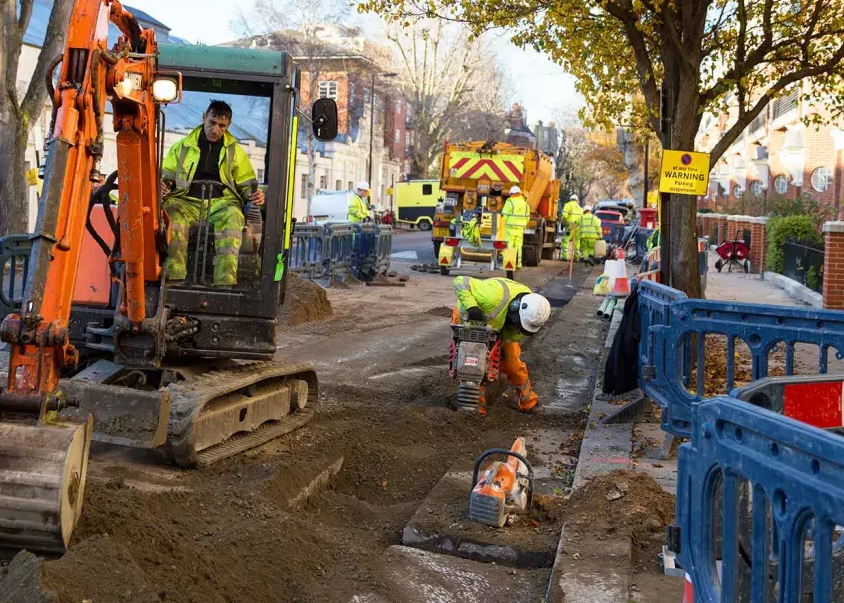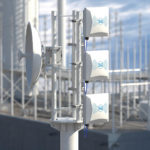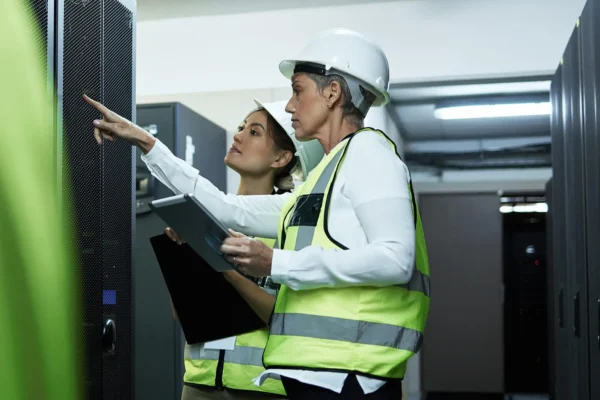As a Principal Contractor or Contractor installing underground fibre optic cables in a busy street. You should pay particular attention to your construction sites, local depots, and compounds, by assessing security to ensure the safety of your workers, member of the public and others who may be at risk. We are also required to go as far as is reasonably practicable, and keep sites in a good order of cleanliness to create a safe working environment and minimise risks.
Here are 10 tips to help you secure your site:
- Conduct a thorough risk assessment: Before beginning any work, compile a comprehensive risk assessment to identify foreseeable hazards at your sites, that could be a risk to your workers, the public and others. This should include factors such as traffic flow, pedestrian footfall, nearby buildings, and any other hazards. Once you have identified the risks, you can put measures in place to mitigate them.
- Implement clear signage: Clear signage is essential to ensure that the public is aware of the work taking place and any potential hazards. This can include signs indicating the presence of underground cables, pedestrian diversions, and speed limits for passing vehicles. Make sure that the signs are large, visible, and easy to understand.
- Use barriers and fencing: Using barriers and fencing can help to create a safe zone around the work area and prevent the public from accessing the site. This can include temporary fencing, barriers, and bollards to create a physical barrier between the work area and the public. For example, security of the work area for transient sites will be achieved through full compliance with the New Roads and Street Works Act 1991 (NRSWA), heras fencing for depot, compounds, and large excavations.
- Instruct your workers: It is essential to provide your workers with the correct training and skills to ensure their safety and well-being while on the job. This includes mandatory NRSWA training for anyone who undertakes physical work on roads within the UK, which must be renewed every five years. Additionally, workers must possess a range of skills such as knowledge of public safety and security, building and construction, attention to detail, teamwork and patience. They are your first line of defence when it comes to site security, and they must be trained to identify and report potential hazards and to react appropriately in emergency situations. Proper use of personal protective equipment (PPE) should also be enforced. By providing your workers with the necessary training and skills, you can create a safer work environment and ensure the success of your business.
- Monitor the site: Regular monitoring of the site can help to identify any potential risks or hazards and enable you to act before they become a problem. This can include daily inspections of the work area, monitoring traffic flow, and conducting regular safety audits to identify areas for improvement. In conclusion, securing a site when installing underground fibre optic cables in a busy street is crucial to ensure the safety of your workers, the public, and others. By conducting a thorough risk assessment, implementing clear signage, using barriers and fencing, training your workers, and monitoring the site
- Welfare: You will also be responsible for any welfare facilities provided at local depot or compounds under your control, by ensuring adequate signage, guarding, and lighting at your local depot / compounds. This includes the safe and secure storage of any materials and / or waste products. Therefore, ensuring the proper disposal of all waste materials.
- Site rules: You will also be required to provide Site Rules in relation to the work area, and safety zones through the correct signing, guarding, and lighting arrangements.
- Visitors: All visitors visiting a worksite will sign on site using the site visitors Logbook. The purpose of the visitor logbook is to ensure a record of any person/s (external or internal) visiting the work area
- Inductions: Only persons who have received an Induction will have approved access to the work site, depot, or compound.
- External visitors: External visitors must not be allowed within the work area.
cdm telecoms e-learning course





